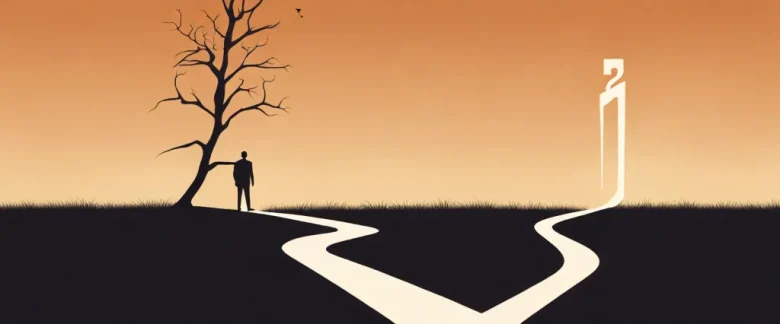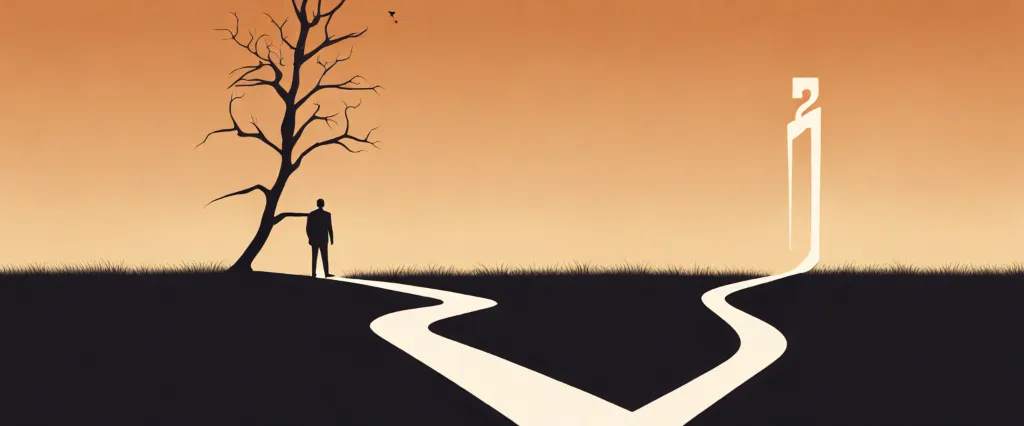In his thought-provoking book “The Courage to Create,” Rollo May explores the innate human desire for creativity and the challenges that hinder its fulfillment. As a distinguished existential psychologist and author, May has delved into the depths of human behavior and the human condition for decades. Known for his influential works in existential psychology, May delves into the psychological and philosophical aspects of creativity, illuminating the transformative power of this essential human drive. Through his intricate analysis and engaging style, May invites readers to embrace the creative process and confront the fears and obstacles that often accompany the act of creation.
Chapter 1: The Courage to Create
Chapter 1 of “The Courage to Create” by Rollo May explores the concept of creativity and the importance of having the courage to express one’s unique ideas, thoughts, and actions. May emphasizes that creativity is not limited to artists or intellectuals but is a vital aspect of being human and living a fulfilling life.
May argues that creativity arises from the human capacity for imagination, which enables us to go beyond the boundaries of what currently exists and envision new possibilities. However, he highlights that the creative process brings with it an inherent fear and anxiety. This fear stems from the uncertainty and vulnerability associated with creating something new and different, as it requires departing from societal norms and potentially facing rejection or failure.
May explains that the fear of being rejected or labeled as weird often prevents individuals from expressing their creativity. However, he proposes that it is this fear itself that indicates the importance and significance of what one wants to create. Creativity requires confronting this fear head-on, embracing it, and using it as a driving force to fully unleash one’s creative potential.
According to May, the courage to create emerges from an individual’s willingness to confront their anxiety, acknowledge their fear, and take risks. He believes that individuals must be willing to be authentic and true to themselves, even if it means going against societal expectations. It is through this authentic self-expression that one can create something truly original and meaningful.
May concludes the chapter by stating that the courage to create is not a one-time act but a continuous process throughout life. It is an ongoing journey that requires constant self-reflection, growth, and a willingness to embrace the uncertainty and vulnerability that comes with creative expression.
Chapter 2: Transcending Fear
Chapter 2 of “The Courage to Create” by Rollo May explores the concept of fear and its relationship with creativity. May argues that fear is an integral component of the creative process as it arises from the uncertainty and risks involved in creating something new and innovative.
May suggests that fear can be either paralyzing or stimulating, depending on how individuals respond to it. He emphasizes the importance of confronting and embracing fear as a means of transcending it. By acknowledging and accepting fear, individuals can harness its energy and transform it into courage.
The chapter introduces the idea that creativity requires a certain level of madness or irrationality. May argues that the creative individual must be willing to challenge conventional wisdom and societal norms, often resulting in a sense of alienation and unease. However, it is through this process of defying norms that true creativity emerges.
May also touches upon the role of anxiety in the creative process. He explains that anxiety is an intrinsic part of being highly attuned to one’s surroundings, as it heightens awareness and sensitivity. Artists and creators often experience a delicate balance between control and surrender, drawing upon their anxieties and uncertainties to express their most profound visions.
In summary, Chapter 2 of “The Courage to Create” explores the inseparable relationship between fear and creativity. It examines fear as a natural response to embarking on creative endeavors, highlighting the importance of embracing fear and using it as a catalyst for courage and originality. By accepting and harnessing fear, individuals can tap into their innate creativity and surpass societal boundaries to unleash their unique artistic expressions.
Chapter 3: Exploring Personal Creativity
Chapter 3 of Rollo May’s book “The Courage to Create” delves into the exploration of personal creativity. May argues that creativity is not limited to artists or geniuses but is a universal human trait that can be developed and nurtured within each individual. He emphasizes that creativity is essential for personal fulfillment and can aid in confronting life’s challenges.
May begins by discussing the societal barriers that hinder personal creativity, such as conformity, fear of failure, and societal pressures. He suggests that in order to unlock our creative potential, we need to embrace our unique ideas and perspectives, challenge traditional norms, and be willing to take risks. May also emphasizes the importance of solitude, emphasizing that periods of silence and self-reflection allow us to access our deepest sources of creativity.
In addition, May explores the role of imagination in personal creativity. He argues that imagination goes beyond daydreaming; it is a fundamental tool for problem-solving and creating original insights. By developing our imaginative capacity, May believes we can tap into our hidden potential and connect with our authentic selves.
Furthermore, May emphasizes the need for courage in the creative process. He asserts that creativity requires stepping outside of our comfort zones and facing the unknown. Fear and anxiety are natural reactions but should not inhibit our creative expression. May highlights the role of courage in embracing the uncertainties and embracing the risk of failure that comes with creativity.
In summary, Chapter 3 of “The Courage to Create” explores the barriers to personal creativity, the importance of solitude and imagination, and the courageous nature required to unlock our creative potential. May ultimately argues that cultivating personal creativity is crucial for personal growth and fulfillment, advocating for individuals to embrace their uniqueness and take risks in their creative pursuits.
Chapter 4: Igniting the Wellspring of Creativity

Chapter 4: Igniting the Wellspring of Creativity from Rollo May’s book, The Courage to Create, explores the inner source of creativity and the factors that contribute to its expression. May argues that creativity arises from the depths of our being, and this chapter delves into the role of imagination, intuition, and inspiration in its cultivation.
May emphasizes the importance of imagination for the creative process. He asserts that imagination allows us to conceptualize new possibilities, envision alternative paths, and create unique solutions to problems. It is through imagination that we transcend the limits of our present realities and tap into the realm of the possible. May warns against a society that stifles the imagination, as it leads to conformity and dullness.
Intuition is another crucial aspect of creativity, according to May. He describes intuition as a sudden illumination or insight that breaks through our rational thinking and allows us to see new connections and patterns. Intuition is a silent voice within us, often neglected or suppressed, but profound in its ability to provide fresh perspectives.
Moreover, May discusses the role of inspiration in creative acts. He states that inspiration comes unexpectedly and cannot be forced, but we can create the conditions for it to flourish. Inspiration is sparked by engagement and deep involvement in what we are passionate about, be it art, science, or any other pursuit. May highlights the importance of establishing a receptive state of mind that enables inspiration to flow.
Overall, this chapter explores the essence of creativity and the elements necessary to nurture it. It emphasizes imagination, intuition, and inspiration as fundamental aspects of the creative process, urging individuals to embrace these qualities and create conditions conducive to their expression. May encourages readers to bravely delve into their inner wellsprings of creativity and unlock the vast potential within.
Chapter 5: The Power of Art and Creation
Chapter 5 of “The Courage to Create” by Rollo May explores the profound impact of art and the creative process on human beings. May argues that art, far from being a mere luxury or pastime, holds the power to transform individuals and society.
May begins by emphasizing that art and creativity are fundamental to human nature, an innate drive that sets us apart from other species. Art, according to May, is the expression of our “ontological need” to go beyond ourselves and create something new. It allows us to transcend our limits and connect with a larger, more meaningful reality.
The author further discusses how art provides a way for individuals to channel their fears and anxieties into something productive. Creating art allows us to confront our existential questions, to give voice to our innermost thoughts and emotions. In this process, we find courage and meaning in the face of the uncertainties of life.
May also emphasizes the role of art in fostering individuality and freedom. Through art, we can assert our unique perspectives and challenge societal norms and conventions. Artistic expression enables us to communicate something that cannot be put into words alone, creating a sense of unity and shared experience that transcends cultural and language barriers.
Furthermore, May explores the transformative power of art within the context of social change. He argues that art can inspire collective action by unveiling the truth, exposing injustice, and provoking emotional responses. Through art, societies can address and grapple with pressing issues, pushing boundaries and shaping a better future.
In conclusion, Chapter 5 of “The Courage to Create” highlights the power of art and creativity in shaping individual consciousness and society. It emphasizes how art allows us to transcend our limitations, confront existential questions, assert our individuality, and inspire social change.
Chapter 6: Self-Actualization and Creation
In Chapter 6 of his book, “The Courage to Create,” Rollo May explores the concept of self-actualization and the process of creation. He argues that self-actualization is a fundamental psychological need and that true fulfillment comes from actively engaging in the creative process.
May begins by acknowledging that many people struggle with the fear of self-expression and actively avoid confronting their true desires and potentials. He emphasizes that self-actualization is not about achieving perfection, but rather about embracing our unique abilities, values, and potentials. It is through the creative act that we can experience a profound sense of fulfillment and achieve self-actualization.
The author points out that creativity is not limited to the arts but exists in all aspects of life, including problem-solving, decision-making, and nurturing relationships. May emphasizes the importance of embracing ambiguity, taking risks, and being open to the unknown in the creative process. He argues that creativity requires courage in order to confront the possibility of failure and rejection.
Furthermore, May emphasizes the significance of personal responsibility in the creative process. Instead of relying on external validation, individuals need to take ownership of their creative endeavors and trust their own judgment. By doing so, they can create art, ideas, and experiences that are meaningful and authentic.
May concludes the chapter by highlighting the transformative power of self-actualization and the creative act. He suggests that by embracing our creative potential and engaging in the act of creation, we can connect with our deepest selves, find meaning in life, and contribute to the well-being of others and the world around us. Ultimately, self-actualization and the courage to create are intrinsically linked, guiding individuals toward a more fulfilling and authentic existence.
Chapter 7: Transcending Limitations and Breakthroughs
Chapter 7 of “The Courage to Create” by Rollo May examines the concept of transcending limitations and achieving breakthroughs in the creative process. May suggests that creativity requires surpassing our self-imposed barriers and pushing beyond our comfort zones.
May begins by discussing the fear of limitation, which he believes stems from societal norms and expectations. He argues that breaking free from these limitations is essential for creative development. To do so, individuals must cultivate courage and take risks. May emphasizes the importance of facing fears and embracing one’s vulnerabilities as essential steps towards creative breakthroughs.
The author explores the idea that creativity is closely linked to freedom and the realization that individuals have the power to shape their own lives and experiences. This realization is a critical catalyst for transcending limitations. May asserts that one’s own limitations should not be seen as obstacles, but rather as opportunities for growth and transformation.
He also emphasizes the role of solitude and introspection in the creative process. May argues that it is in moments of solitude that one can confront their fears, challenge their limitations, and reach new understandings. Awakening the creative spirit involves connecting with one’s inner self and exploring the depths of one’s consciousness.
According to May, vulnerability is an inherent aspect of the creative process. True creativity requires individuals to embrace their vulnerabilities and allow themselves to be exposed emotionally. Only then can they tap into the depths of their being and create genuinely meaningful and authentic work.
In summary, Chapter 7 of “The Courage to Create” illuminates the importance of transcending limitations and experiencing breakthroughs as part of the creative process. May encourages individuals to embrace courage, face fears, and recognize that limitations are not roadblocks but stepping stones towards creative growth. Through introspection and vulnerability, individuals can transcend their limitations, unlock their true creative potential, and embark on a path of personal transformation.

Chapter 8: The Meaning and Value of Creation
Chapter 8 of “The Courage to Create” by Rollo May, titled “The Meaning and Value of Creation,” delves into the profound significance of human creativity and its transformative power. May argues that creation is essential in shaping the human experience and understanding our place in the world.
The chapter begins by emphasizing the unique human ability to create. May suggests that all individuals possess an inherent creative impulse, which manifests in various forms such as art, music, science, or even everyday acts like problem-solving and decision-making. He asserts that creating is not limited to the domain of artists or intellectuals but is an integral part of being human.
May explores the deeper meanings behind the act of creation, suggesting that it allows individuals to go beyond their limited existence and connect with something greater. Through the creative process, individuals gain a sense of purpose, meaning, and transcendence, enabling them to confront and overcome the anxieties and limitations of their lives. Furthermore, creation enables individuals to discover and express their authentic selves, giving them a sense of dignity, self-worth, and fulfillment.
The chapter also emphasizes the importance of societal support for creativity. May contends that society should recognize and value creative individuals, offering them the encouragement and resources they need. By fostering an environment that embraces creativity, society can promote personal growth, cultural progress, and collective well-being.
In essence, Chapter 8 of “The Courage to Create” emphasizes that creation is an essential aspect of human existence. May suggests that by engaging in creative acts, individuals discover purpose, transcend their limitations, and find connection with something greater than themselves. Societies that value and support creativity can benefit from the profound contributions of individuals, fostering personal growth, cultural enrichment, and overall human flourishing.
After Reading
In conclusion, Rollo May’s book “The Courage to Create” provides a thought-provoking examination of the creative process and the inherent challenges individuals face in expressing their unique potential. By exploring the relationship between creativity and courage, May emphasizes the importance of taking risks, embracing uncertainty, and confronting our fears to realize our creative potential. Through insightful anecdotes, philosophical insights, and psychological analysis, May encourages readers to tap into their inner resources and transcend the limitations that bind them, thereby encouraging a fulfilling and authentic creative existence. Ultimately, “The Courage to Create” serves as an inspiring and empowering guide for individuals seeking to unlock their creative energy and live a more courageous life.
1. The Artist’s Way” by Julia Cameron: This book explores the creative process and helps readers overcome self-doubt and embrace their artistic abilities. It provides tools and exercises to unlock creativity and find inspiration in everyday life.
2. “Big Magic: Creative Living Beyond Fear” by Elizabeth Gilbert: Gilbert, author of “Eat, Pray, Love,” encourages readers to embrace their curiosity and adopt a fearless approach to living a creative life. She shares personal anecdotes and practical advice to help individuals navigate the challenges and rewards of pursuing their passions.
3. “Finding Your Element: How to Discover Your Talents and Passions and Transform Your Life” by Sir Ken Robinson: Robinson, a renowned educator, motivates readers to identify their natural talents and passions to live a more fulfilling life. Through inspiring stories and practical exercises, he guides individuals toward finding their true calling and realizing their creative potential.
4. “The Creative Habit: Learn It and Use It for Life” by Twyla Tharp: Tharp, an acclaimed choreographer, shares her insights on developing and maintaining creative habits. She offers practical exercises, anecdotes, and rituals designed to spark creativity and overcome creative blocks.
5. Steal Like an Artist: 10 Things Nobody Told You About Being Creative” by Austin Kleon: In this book, Kleon presents an unconventional approach to fostering creativity. He encourages readers to embrace influence, seek inspiration from various sources, and remix ideas to create original work. With humor and clarity, Kleon provides practical advice for aspiring artists and writers.




